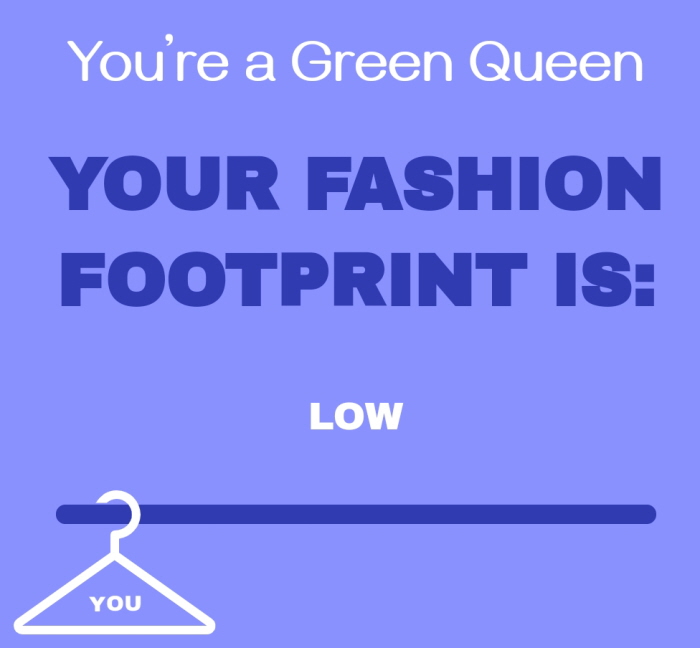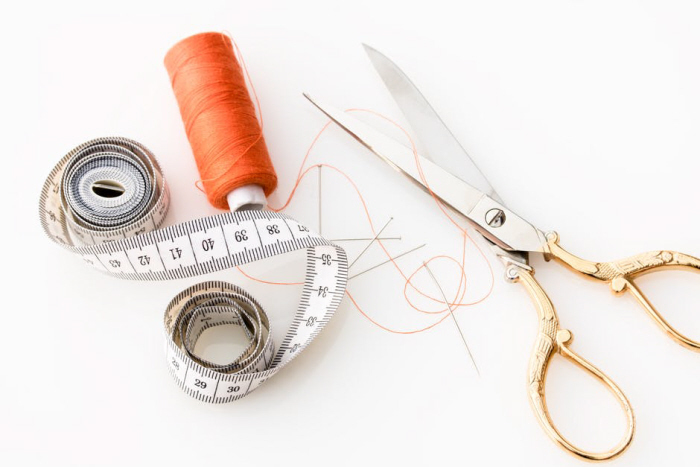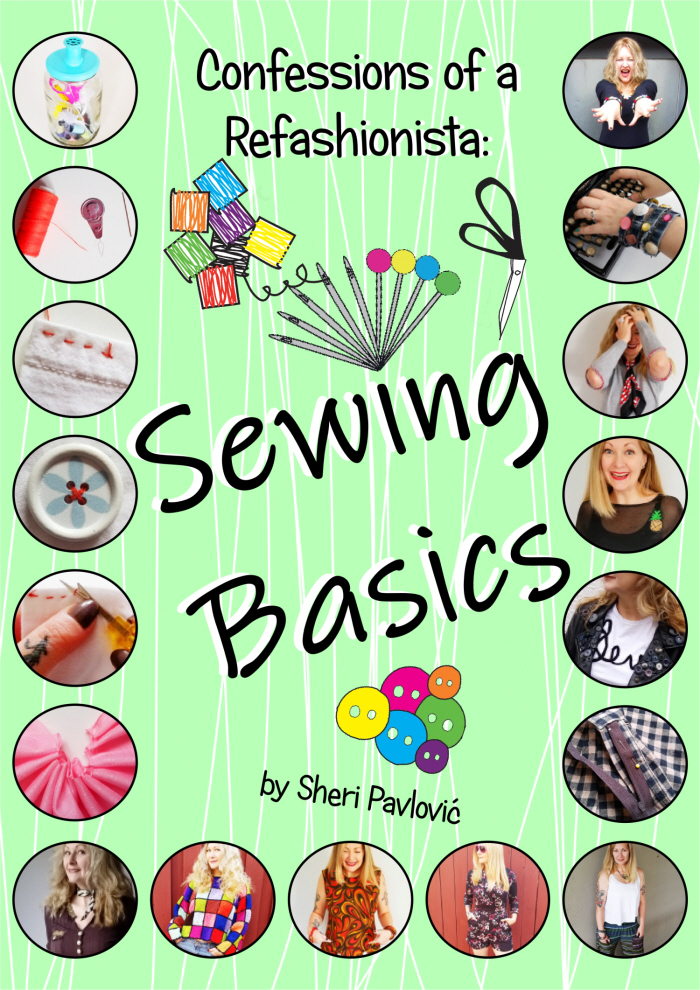We all know that the global fashion industry produces an absolutely insane amount of harmful carbon emissions but do you ever wonder how much your own wardrobe habits are contributing to climate change?

Discover just how dirty your closet really is with this brilliant fashion footprint calculator and check out my own refashionista results + tips to consume less and reduce your footprint below:

I don’t think my result is surprising at all considering how eco-friendly my lifestyle is. Upcycling, shopping secondhand, not having a vehicle and caring for my clothing sustainably really helps to keep my footprint low.
Fashion fact: New apparel production releases 4M tons of harmful carbon emissions annually, contributing more than 8% of global greenhouse emissions. The single best thing we can do for the planet is consume less and reuse more.

I’m super proud to be this much lower than an average consumer, hopefully my work is encouraging others to do the same!
Fashion Fact: The garments that take the most carbon to produce are jackets, dresses and jeans. Jeans have 4-5 times the carbon impact of a T-shirt, based on the weight of the fabric required. Snag these items secondhand to cut the most carbon.

0.8 of a 90-ish minute flight = my fashion footprint for an entire year, wowza!
Fashion facts: Shopping online has, on average, a 60% lower carbon impact than shopping in-store. Nearly 85% of in-store’s impact comes from driving there. (Choosing standard shipping options reduces carbon by 50%.)
Returning clothes has a significant impact on the environment. Only 50% of returned garments are restocked by traditional retailers, and a staggering 25% of them end up in landfill. Online shopping has 3x the return rate, but returning by mail has, on average, a 60% lower carbon impact.

The average household does around 5-6 loads of laundry per week, which creates 55 lbs of CO2 emissions. Not only does less washing help the environment, it makes your clothing last longer and stay brighter. 75% of laundry’s total carbon impact comes from machine drying your clothes. Air drying is the most sustainable way to dry + washing your clothes in cold water reduces your carbon impact by 10%.
Grab all of my eco tips for keeping your clothes in top condition right here.

Other than reusing & buying secondhand instead of new, the best way to reduce your impact is by extending the life of the clothes you already own. Many, many useful items that still have a lot of life left in them end up in landfills. If you extend the life of a garment by one year, you can reduce its carbon footprint by 25%.
Get started refashioning your wardrobe and mending garments with the simple stitching techniques & quick tutorials in my sewing basics e-book!
CoaR’s Sewing Basics contains easy to follow tutorials & full colour step by step photos for everyone from first-time upcyclers to experienced Refashioners!
The Sewing Basics include:
DIY Sewing Kit Contents – Getting Started – 8 Stitching Techniques – Button Basics
How to Gather & Ruffle Fabric – 8 Quick Mends & Fixes – 8 Refashioning Projects
+ 10 Preloved Shopping Tips too!
Want to start creating your own unique style? Check out my E-courses right over here:
and transform your entire wardrobe for pennies with my groovy CoaR tutorial E-book collections right here:
Please carefully read the terms and conditions regarding CoaR e-book sales.










Thank you for helping us do our part to stop destroying the planet!
Thank YOU for taking the initiative to switch to eco-friendly habits & products ♥